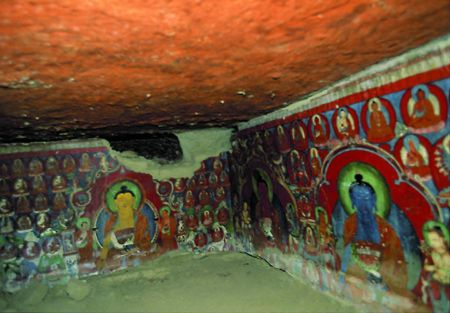
The combination of forest, mountain, and sky, all wreathed in a midsummer mist, provided a sublime visual context.Īfter waiting for a short time in the offices of the Maijishan Art Research Institute, our partner in conserving Maijishan’s Buddhist heritage, we are assigned an English-speaking guide to take us up to the mountain. The clay buddhas that adorned its side were massive structures some 100 feet tall and clearly visible from the visitor center half a mile away. From our vantage point a giant emerged, appearing to rise at least 1,000 feet from the ground. Maijishan was more majestic in person than could be imagined. In the winter, the snow seasoned the worked stone with an austere grandeur, though its starkness seemed to herald the beauty of the spring yet to come. A tall, tawny-colored mountain, Maijishan appeared to me as a prominent bluff overlooking a primeval forest of oaks and pine. As we wound our way through its rain-choked streets, I tried to imagine the site as I had seen it from pictures. Li, Nada Hosking, Global Heritage Fund’s Director of Programs and Partnerships, and I had just arrived in Tianshui, a small, industrial city in China’s remote Gansui province. From the train station, however, there’s little to see of one of China’s, and the world’s, most significant Buddhist complexes. It is not an understatement to say that Kuanghan Li, Global Heritage Fund’s Director of the China Heritage Program, is optimistic about the prospects for Maijishan, one of a handful of Buddhist caverns found in the country. These places were built by imperial families for hundreds of years.”

Yet, it is also one of the most important.

“This is one of the most overlooked sites in China,” said Kuanghan Li. There are places where the worms had eaten holes through the wood, creating small portholes through which one can see the forests of the valley floor far below………

There are places where they creak, places where they sing in low sonorous tones. Each crackle courses through pine boards in a ceaseless chorus of sound. Unmatched by the immovable stone of a massive cliff-like form, the wind bows to the unwavering integrity of the mountain, but cuts through the zigzagging maze of rickety, ancient wooden stairs, built centuries before on the mountain’s face, with the tautness of snapping fingers. This article originally appeared on Popular Archaeology. Experts and Chinese officials are on a mission to preserve one of the world’s most magnificent yet least-known cultural treasures for posterity.


 0 kommentar(er)
0 kommentar(er)
